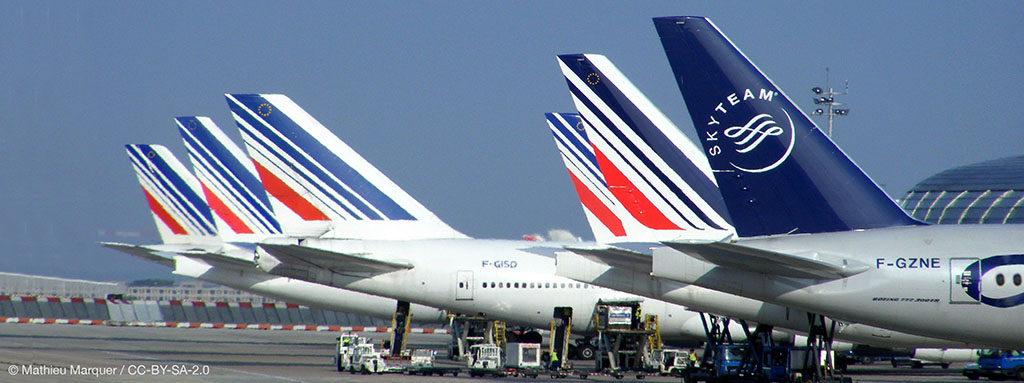Politicians want it. Businessmen want it. The mass media write about it. Almost all the powers that be want to turn their airport into a hub. But do they actually know what it involves? Can they make a contribution to make it come about?
The origin of the term comes from the expression “hub-and-spoke” which is a way of modelling a network where most routes pass through one or several central nodes. There are few connections between the network’s peripheral points, while the central ones monopolise most of them. This kind of network is very efficient at managing traffic, since it allows for the availability of a larger number of connections at a significantly lower price, while at the same time increasing links and frequencies among all points (though they do not necessarily have to be direct routes).
The future of air transport is promising and so is the future of large airport centres.
Basically speaking, the term “hub” is used in the airport world to name precisely this, a large passenger and cargo distribution centre.
The expansion of this communications model first arose in the United States in 1978 as a result of air traffic deregulation in the country and the liberalisation of the restrictions placed on airlines which had been in force until then.
Being a hub provides significant advantages to an airport, including: more connectivity and, hence, greater attractiveness for new companies and routes; an increase in operations and therefore revenues; availability of a certain reserve capacity to deal with any contingency; greater positive influence on the regional economic environment by offering more communications to companies; improvement in the area’s economy by creating more jobs and ancillary services, etc.
Nevertheless, being a hub or not does not depend on the airport itself or local politicians. The existence of airlines willing to centralise their activity at the facility is of greater importance. It is, in fact, the airlines which can convert an airport into a hub. As much as an airport may want it, without airlines that go for this model it will only ever be a conventional airport with point-to-point services.
There are hubs of different sizes. Any airport – even one with low traffic levels – can operate as a hub if a certain airline decides to use it as an airway interconnection point. This involves the airline concentrating operations and consequently significant cost savings.
The majority of airports, however, want to become megahubs; that is to say operations centres which move hundreds of thousands of passengers on a daily basis. Some megahubs essentially operate domestic traffic, as is the case of many US (Atlanta, Chicago, Los Angeles, etc.), Indian (New Delhi, Mumbai) or Chinese (Beijing, Shanghai-Hongqiao) airports. Others, on the other contrary, have become colossal international flight interconnection centres, like Dubai, Heathrow and Hong Kong.
Generally speaking, each hub is mainly operated by one airline (or alliance) which accounts for a high percentage of the operations and grants it the condition of being a hub. In some cases, this relationship of dependence is especially significant.
For instance, Delta Airlines operates 80% of the total number of flights at Hartsfield-Jackson Airport in Atlanta. United Airlines also has the same percentage of operations at Houston Airport. In the case of Charlotte-Douglas Airport, US Airways operates 85% of the flights. In the Middle East, the major operator at Dubai Airport is Emirates (with exclusive terminals and runways). This is also the case of Etihad at Abu Dhabi Airport and Qatar Airways at Doha Airport.
This trend is less evident in Europe because its hubs tend to be linked to airline alliances (Star Alliance, Sky Team, Oneworld, etc.), which decide on which airports they use as connection centres for their partners. Despite this, there are also very obvious cases like the Lufthansa (Frankfurt), British Airways (London-Heathrow), Air France (Paris-Charles de Gaulle) or KLM (Amsterdam-Schiphol) hubs.
The future of air transport is promising and so is the future of large airport centres, though with some nuances. It is foreseeable that that there will be progressively more airports operating as large connection centres, thus adding new names to the list throughout the world. It could not be otherwise given current forecasts. The megahubs in Asia will continue growing more than the average, and in particular so will those located in the Middle East (with double-digit yearly air traffic growth). Apart from the benefits provided by their location, there are also other essential parameters like their enormous financing capacity and the almost non-existent constraints on the airports’ enlargement, which are located in the middle of the desert and therefore do not have the environmental or territorial constraints that can be found in any enlargement project in places like Europe (not to mention the slow pace of development and administrative paperwork).
Air traffic will grow 4.5% per year on average over the coming years. The forecasts for 2035 suggest that the number of aircraft in service will double. Airports know they cannot miss out on the chance of growing because there will be real demand and therefore a certain opportunity to increase their business. Due to their characteristics, hubs seem to be the model which will take advantage of such growth more efficiently.
If a region wants its airport to become a hub, it has to ensure suitable conditions exist for the airlines’ business, apart from making sure their geographic location is suitable. That will make it sufficiently attractive for airlines, which effectively make it possible for that to happen. This includes financing facilities, good infrastructures, high-quality services, no background of industrial disputes, a reduction in bureaucracy, possibilities of expansion but, above all else, keeping local politicians as far away as possible.



